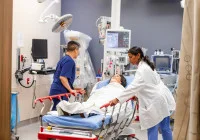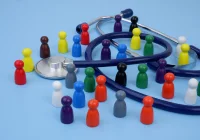Staff shortages continue to challenge healthcare systems, particularly among nurses and physicians. These shortages contribute to overburdened emergency departments, inefficient care coordination and growing clinician burnout. A nurse-led, telehealth-first approach offers a scalable and patient-centred solution to these issues. By leveraging virtual care and traditional communication tools like the telephone, this model improves care access, streamlines patient routing and enhances system efficiency.
Improving Patient Routing and Reducing Emergency Pressure
One of the critical benefits of a nurse-led telehealth model lies in its ability to connect patients and families with licensed professionals at the moment support is needed. Without such immediate access, patients often resort to emergency departments, leading to unnecessary visits and delayed care for those truly in need. Nurse triage via telehealth enables better patient routing by guiding individuals to the appropriate level of care, easing pressure on emergency services and reducing avoidable hospital visits.
The model offers emotional reassurance alongside medical advice. Many patients seeking emergency care are not necessarily facing urgent conditions but are unsure about symptoms and lack timely support. Having a nurse assess the situation remotely provides clarity and peace of mind, preventing unnecessary escalation. This real-time triage improves satisfaction for patients and families while allowing emergency departments to focus on acute cases. It also plays a key role in reducing stress and fatigue for front-line emergency staff by preventing overcrowding.
Boosting Efficiency with Accessible Technology
A key strength of the nurse-first approach is its reliance on accessible and familiar technology. Not all patients have the digital literacy or internet access required for app-based or video-enabled platforms. By using telephone communication, which is nearly universally available, healthcare systems ensure inclusivity and equity in care delivery. The simplicity of a phone call eliminates barriers and ensures that patients, regardless of location or resources, can reach professional support promptly.
This low-tech, high-impact method also enhances the efficiency of existing patient transfer centres. Instead of relying on on-call physicians who may not be readily available, nurses using telehealth can promptly initiate care coordination. They contact doctors, verify bed availability and arrange transport, ensuring seamless and timely transfers. This flexibility ensures continuity of care even in unpredictable situations, such as after-hours or during provider absences.
Beyond individual interactions, a nurse-first model also serves as a foundation for consistent, standardised processes across healthcare systems. It enables streamlined communication among providers and ensures that patient data and decisions are quickly shared, fostering a more connected and responsive network of care.
Achieving Scale and Reducing Clinical Burnout
Centralised telehealth hubs dedicated to nurse-led triage and transfer functions offer healthcare organisations substantial operational advantages. They allow systems to optimise patient flow across hospitals and departments, avoiding bottlenecks and resource imbalances. For example, if one facility is at capacity while another nearby has availability, nurses can redirect patients accordingly, preserving access without compromising care quality.
Must Read: Nurses Shaping Healthcare Technology
In addition, remote nurses are not subject to the same fatigue and context-specific pressures as in-person staff. They can make objective, patient-centred decisions based on real-time information and established protocols, helping to eliminate delays caused by hesitation or shift fatigue. This shift in workflow helps preserve in-person clinical capacity for hands-on care while ensuring that decisions about transfers and triage are handled by specialists working in optimal conditions.
Data analytics further enhance this model. By analysing transfer times, patient flow and acceptance rates by specialty and time interval, healthcare leaders gain actionable insights into operational inefficiencies. These insights can guide strategic improvements, identify changing patterns in referrals and address service gaps. Ultimately, such data-driven management supports higher quality care and better financial outcomes.
The model also directly contributes to clinician wellbeing. Remote triage services reduce the after-hours demands placed on physicians, allowing them to rest and recover. This not only improves physician performance during scheduled hours but also mitigates the long-term risks of burnout. Delegating appropriate tasks to nurse-led teams ensures that each professional operates within their optimal scope, reinforcing workforce sustainability.
A nurse-led, telehealth-first care model offers a compelling response to several systemic healthcare challenges. It improves patient routing, enhances access through universally available technology and strengthens hospital operations through centralised triage and transfer services. By combining clinical expertise with efficient communication tools and data-driven processes, the model promotes better care delivery while alleviating the burden on overextended clinical staff. Such scalable, inclusive and nurse-driven innovations are key to building more resilient and responsive care networks.
Source: Healthcare IT News
Image Credit: iStock










